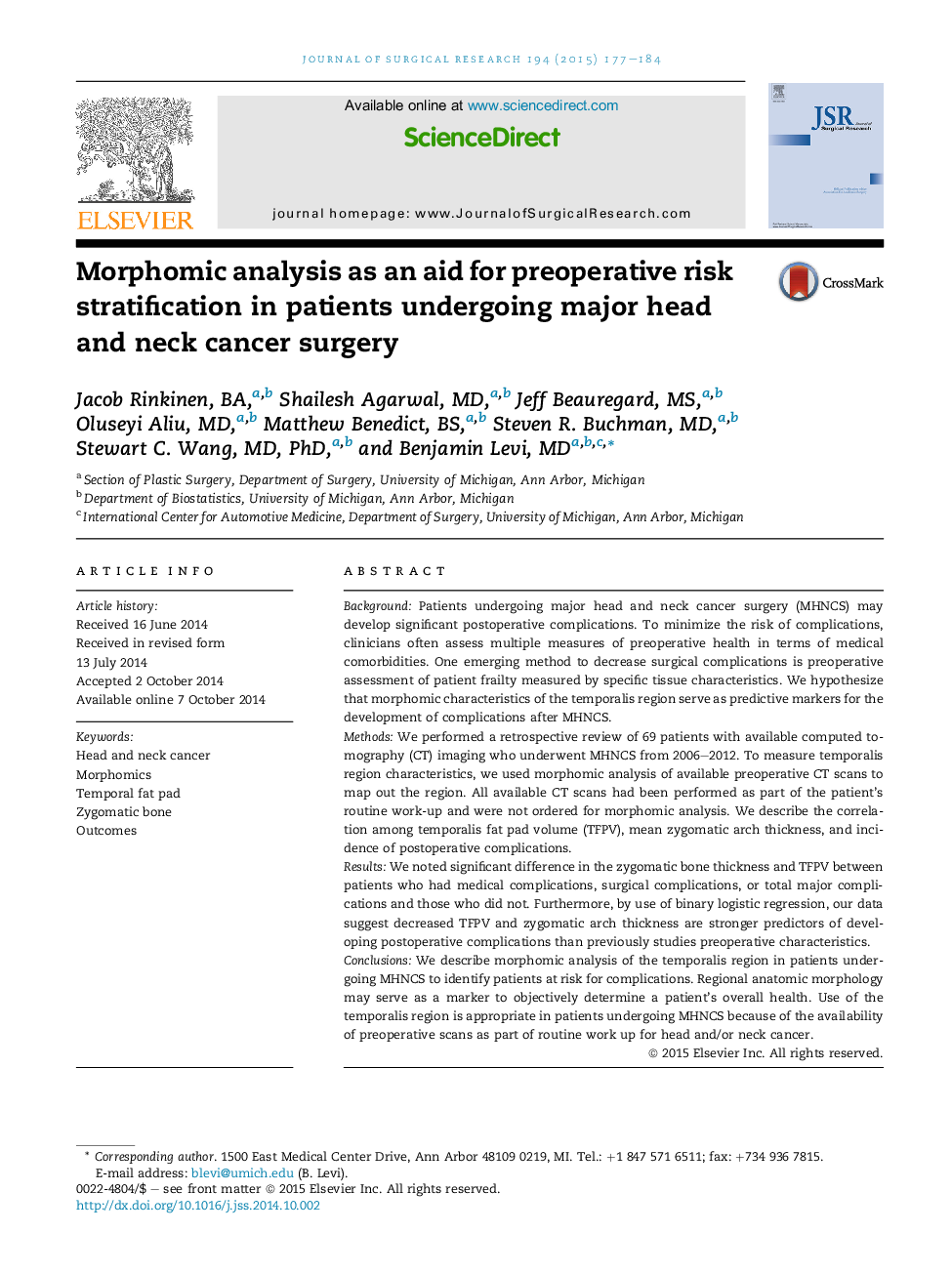| Article ID | Journal | Published Year | Pages | File Type |
|---|---|---|---|---|
| 4299842 | Journal of Surgical Research | 2015 | 8 Pages |
BackgroundPatients undergoing major head and neck cancer surgery (MHNCS) may develop significant postoperative complications. To minimize the risk of complications, clinicians often assess multiple measures of preoperative health in terms of medical comorbidities. One emerging method to decrease surgical complications is preoperative assessment of patient frailty measured by specific tissue characteristics. We hypothesize that morphomic characteristics of the temporalis region serve as predictive markers for the development of complications after MHNCS.MethodsWe performed a retrospective review of 69 patients with available computed tomography (CT) imaging who underwent MHNCS from 2006–2012. To measure temporalis region characteristics, we used morphomic analysis of available preoperative CT scans to map out the region. All available CT scans had been performed as part of the patient's routine work-up and were not ordered for morphomic analysis. We describe the correlation among temporalis fat pad volume (TFPV), mean zygomatic arch thickness, and incidence of postoperative complications.ResultsWe noted significant difference in the zygomatic bone thickness and TFPV between patients who had medical complications, surgical complications, or total major complications and those who did not. Furthermore, by use of binary logistic regression, our data suggest decreased TFPV and zygomatic arch thickness are stronger predictors of developing postoperative complications than previously studies preoperative characteristics.ConclusionsWe describe morphomic analysis of the temporalis region in patients undergoing MHNCS to identify patients at risk for complications. Regional anatomic morphology may serve as a marker to objectively determine a patient's overall health. Use of the temporalis region is appropriate in patients undergoing MHNCS because of the availability of preoperative scans as part of routine work up for head and/or neck cancer.
